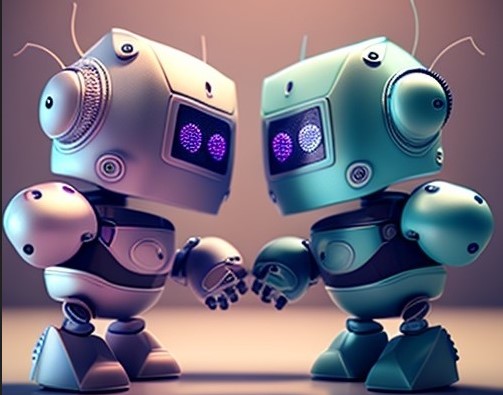Artifical Intelligence
AI revolution becomes rollercoaster
In the space of three days, four major announcements, from Microsoft, Google, OpenAI and Baidu, ushered in the next phase of generative artificial intelligence, writes ARTHUR GOLDSTUCK.
Here we go again. In the next few weeks, the planet will be flooded with books, articles, videos and images created by robots. If we thought that the world being roused by ChatGPT was a rude awakening, we should prepare to be roughly tossed from our beds.
The world of generative artificial intelligence, the ability of software to create new content, was shaken up last week as Google, Microsoft, OpenAI and China’s Baidu all unveiled the next generation of these capabilities. It’s going to be a wild time, as we move from a wake-up call to a rollercoaster ride.
On Tuesday, Google announced it was introducing AI into Google Workspace, promising to “help people create, connect, and collaborate like never before” across Gmail, Docs, Slides, Sheets, Meet, and Chat.
To start, it is introducing AI-powered writing features in Docs and Gmail.
That means you should never get another badly-worded email again. Good luck with that…
According to Google cloud AI and industry solutions vice president June Yang and GM Burak Gokturk, “Generative AI is poised to usher in a new wave of interactive, multimodal experiences that transform how we interact with information, brands, and one another.”
The promise is rich, but as Google showed when it attempted to demo its supposed ChatGPT-killer, Bard, there is still a gulf between AI promise and delivery.
But it starts relatively modestly, say Yang and Boturk: “Harnessing the power of decades of Google’s research, innovation, and investment in AI, Google Cloud is bringing businesses and governments the ability to generate text, images, code, videos, audio, and more from simple natural language prompts.”
The timing was probably not coincidental. Hours later, OpenAI, the company behind ChatGPT released the next generation of the engine behind its chatbot, currently running on GPT-3.
The new version, GPT-4, is described as a “multimodal model”, which means it can handle images and videos along with text. In other words, tell it in text what you want, and it will produce an article, an image and a video, on demand, and each probably never seen before.
Not enough for the world? On Thursday, Google’s mortal enemy in the productivity space, an ancient company called Microsoft, upped the ante.
It announced Copilot 365, which brings GPT-4 into Microsoft 365, formerly its Office suite. This means that anyone using Microsoft software will have a “productivity co-pilot” literally
drafting emails, putting together PowerPoint presentations, generating Word documents, and analysing Excel spreadsheets. Unlike ChatGPT, which is still limited to content produced before 2022, it will access live platforms like the Bing search engine and LinkedIn to provide more information and context.
On the same day Copilot was unveiled, China’s largest search engine company, Baidu, announced its answer, a chatbot called Ernie. But someone didn’t ask Ernie for the memo on how revolutions are presented.
Reuters reported: “Unlike ChatGPT, which last November launched as a free to use chatbot to the public, Baidu limited the presentation to brief videos that showed Ernie carrying out mathematical calculations, speaking in Chinese dialects and generating a video and image with text prompts.”
The anti-climax was palpable. Baidu’s Hong Kong shares fell by 10% even as CEO Robin Li was speaking. That meant a “mere” $3-billion hit to market cap, a fraction of Google’s $120-billion tumble after Bard failed spectacularly in a public demonstration.
Once it moves beyond a trial phase, currently open to an initial group of users with invitation codes, Baidu is likely to offer similar capabilities as GPT-4. It will include conversational chat, answering questions, writing articles, writing code, and producing images, audio and video from a text prompt.
Where is Apple Siri, Amazon Alexa and Google Assistant in all this? These three “intelligent” virtual assistants were the cutting edge of AI when they first launched. They remain search engines with voice.
The 20th century just called and asked if it can have them back.
* Arthur Goldstuck is founder of World Wide Worx and editor-in-chief of Gadget.co.za. Follow him on Twitter on @art2gee

















